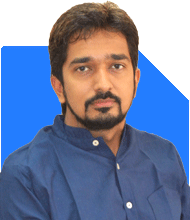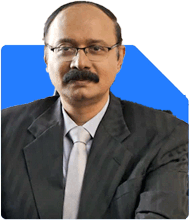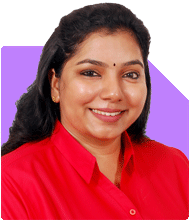Ramalingam Kalirajan |8291 Answers |Ask -Follow
Mutual Funds, Financial Planning Expert - Answered on May 02, 2024
He has an MBA in finance from the University of Madras and is a certified financial planner.
He is the director and chief financial planner at Holistic Investment, a Chennai-based firm that offers financial planning and wealth management advice.... more

Good Morning Sir, I am 52 years old and wish to start investing in Mutual Fund with 10K per month as a beginner for a period of 3/5 years Kindly advise me how would I diversify / allocate the money in different funds so as to get the maximum returns Regards Sangeeta Das
Large Cap Funds: These funds invest in well-established companies with a track record of stable performance. They can offer stability to your portfolio.
Allocate around 30-40% of your investment amount to large cap funds.
Mid Cap Funds: Mid cap funds invest in companies with medium market capitalization, offering higher growth potential than large caps but with slightly more risk.
Allocate around 20-30% of your investment amount to mid cap funds.
Small Cap Funds: These funds invest in small companies with high growth potential but higher risk. They can add growth opportunities to your portfolio.
Allocate around 20-30% of your investment amount to small cap funds.
Diversified Equity Funds: These funds invest across market caps and sectors, offering broad diversification and potential for higher returns.
Allocate around 10-20% of your investment amount to diversified equity funds.
Balanced Funds: Balanced funds invest in a mix of equities and debt instruments, offering a balance between growth and stability.
Allocate around 10-20% of your investment amount to balanced funds.
Sectoral Funds (Optional): If you have a specific sector or theme in mind that you believe will perform well, you can allocate a small portion of your investment amount to sectoral funds. However, be cautious as these funds can be more volatile.
Limit the allocation to sectoral funds to around 5-10% of your investment amount.
Remember to review your portfolio regularly and rebalance if necessary to maintain your desired asset allocation. Additionally, consider factors such as expense ratios, fund manager track record, and historical performance when selecting mutual funds.
Lastly, it's always a good idea to consult with a financial advisor to ensure your investment strategy aligns with your financial goals and risk tolerance. Happy investing, Sangeeta!
You may like to see similar questions and answers below
Dev Ashish | Answer |Ask -Follow
MF Expert, Financial Planner - Answered on Jun 13, 2023
Ramalingam Kalirajan |8291 Answers |Ask -Follow
Mutual Funds, Financial Planning Expert - Answered on May 31, 2024
Anil Rego |388 Answers |Ask -Follow
Financial Planner - Answered on Jul 24, 2024
Moneywize |181 Answers |Ask -Follow
Financial Planner - Answered on Sep 13, 2024
Pushpa R |62 Answers |Ask -Follow
Yoga, Mindfulness Expert - Answered on Apr 26, 2025
Pushpa R |62 Answers |Ask -Follow
Yoga, Mindfulness Expert - Answered on Apr 26, 2025
Radheshyam Zanwar |1571 Answers |Ask -Follow
MHT-CET, IIT-JEE, NEET-UG Expert - Answered on Apr 26, 2025
Radheshyam Zanwar |1571 Answers |Ask -Follow
MHT-CET, IIT-JEE, NEET-UG Expert - Answered on Apr 26, 2025
Radheshyam Zanwar |1571 Answers |Ask -Follow
MHT-CET, IIT-JEE, NEET-UG Expert - Answered on Apr 26, 2025
Dr Nagarajan Jsk |346 Answers |Ask -Follow
NEET, Medical, Pharmacy Careers - Answered on Apr 25, 2025
Nayagam P P |4463 Answers |Ask -Follow
Career Counsellor - Answered on Apr 25, 2025
Nayagam P P |4463 Answers |Ask -Follow
Career Counsellor - Answered on Apr 25, 2025
Nayagam P P |4463 Answers |Ask -Follow
Career Counsellor - Answered on Apr 25, 2025
Patrick Dsouza |1030 Answers |Ask -Follow
CAT, XAT, CMAT, CET Expert - Answered on Apr 25, 2025
























